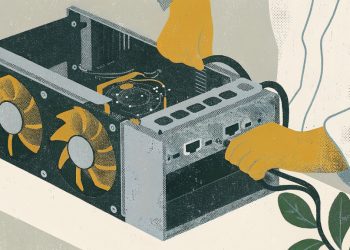
A Simple Step-by-Step Guide for Beginners
Non-fungible tokens (NFTs) have opened a new frontier for creators, collectors, and tech enthusiasts, drawing millions worldwide to experiment with this rapidly evolving digital medium. But for absolute beginners, one of the first questions is often, “What can actually be an NFT?” Understanding this is key if you want to dive into the world of NFT creation.
What Types of Things Can Be an NFT? Which Are Most Popular?
At its heart, an NFT is a unique digital certificate stored on a blockchain—a database maintained by computers worldwide. This certificate proves ownership and authenticity of a specific item. But what “items” do NFTs represent?
In theory, almost any digital file can become an NFT. Here are the most common types:
- Digital Art: JPEGs, PNGs, GIFs, illustrations, 3D renders, drawings, or anything visual. This is the most popular NFT category and where the NFT movement first exploded. Famous examples include Beeple’s digital works and profile picture (PFP) collections like CryptoPunks and Bored Ape Yacht Club.
- Photos and Photography Collections: Photographers are increasingly publishing their work as limited-edition NFTs, allowing collectors to own a piece of digital history.
- Music and Audio Files: Songs, albums, soundscapes, voice memos, and even podcasts are issued as NFTs, sometimes granting buyers concert tickets or exclusive listens.
- Videos and Animations: Short films, movie clips, loops, and animated art are popular. Memorable moments from sports (“NBA Top Shot” highlights) or pop culture are frequently minted as NFTs.
- Collectibles and Trading Cards: Digital cards, virtual pets, and other in-game or blockchain-based collectibles have a robust market. Think baseball cards, but online.
- Virtual Goods and Gaming Items: Skins, avatars, weapons, or special gaming features are traded as NFTs, empowering players to own, sell, or transfer virtual assets.
- Domain Names and Digital Identity: Blockchain-based domain names like .eth, .crypto, or .nft, serving as your web identity and wallet address.
- Writing and Content: Some authors release poems, eBooks, or individual essays as NFTs.
- Event Tickets and Memberships: A new use case lets NFTs unlock physical or digital access—special content, events, or even private chat rooms.
- Real-World Assets (Tokenization): Physical art, wine, or real estate can also be represented by NFTs, though these require trusted custodians.
Most Popular NFT Types:
Right now, digital art (including profile pictures), gaming assets, and collectibles dominate NFT marketplaces like OpenSea or Rarible. Music NFTs are gaining traction, and major brands or celebrities often use video-based NFTs for fan engagement. If you’re just starting out, digital images and illustrations are the easiest to create and publish because they have the broadest user base and marketplace support.
Where Should You Start? Understanding the Basics
Before you make and sell your first NFT, it helps to know the fundamentals:
- Blockchain: The decentralized ledger system where NFTs live. Ethereum is the leading blockchain for NFTs, but alternatives like Polygon, Solana, and Binance Smart Chain offer lower fees and growing communities.
- Cryptocurrency Wallet: Think of this as your digital bank and safe. It stores cryptocurrency (usually Ether, or ETH) and manages your NFTs.
- NFT Marketplace: Platforms like OpenSea, Rarible, Mintable, and Foundation are online stores for NFTs, where you can mint (create), list, and sell your digital creations.
Step 1: Set Up Your Cryptocurrency Wallet
You need a wallet to interact with the blockchain and NFT platforms.
- Choose Your Wallet: MetaMask, Coinbase Wallet, or Trust Wallet are beginner favorites. They are reliable and easy to use.
- Download and Install: Visit the official website or app store, download the wallet, and follow the setup steps.
- Safeguard Your Recovery Phrase: The wallet will provide “seed phrases” or recovery words—write them down and store them securely. They are your key to wallet access.
- Add Some Cryptocurrency: Most platforms require Ether (ETH) for fees. Buy ETH from exchanges like Coinbase, Binance, or Kraken and transfer it to your wallet.
Step 2: Choose an NFT Marketplace
The marketplace is where you publish and sell NFTs. For beginners, OpenSea, Rarible, and Mintable are excellent starting points due to their user-friendly interfaces and tutorials.
- OpenSea: Largest and most widely used marketplace, supporting Ethereum, Polygon, and Klaytn.
- Rarible: Community-driven, intuitive, and supports Ethereum and other chains.
- Mintable: Streamlined for newcomers, offering automated minting steps.
This guide uses OpenSea for examples, but the steps are similar on most platforms.
Step 3: Connect Your Wallet to the Marketplace
- Go to the marketplace’s official website.
- Click “Connect Wallet.”
- Select your type of wallet (e.g., MetaMask), then approve the connection in your wallet extension or app.
- Your profile will be automatically created based on your wallet’s address.
Step 4: Prepare Your Digital File
Decide which of your creations to mint as an NFT. The file could be an image, audio track, video, or document. Check your platform’s file format and size limits—OpenSea, for example, allows JPEG, PNG, GIF, MP4, and more, generally up to 100MB.
- Tips: Name your file clearly for discovery and back it up safely. Think about how you want your item to appear in the NFT gallery.
Step 5: Mint (Create) Your NFT
Minting makes your creation a permanent part of the blockchain. On OpenSea, here’s what to do:
- Click “Create.”
- Upload your file.
- Enter details for your NFT:
- Name: Choose something unique and descriptive.
- Description: Tell the story of your work—what inspired you, or why it matters.
- Collection (optional): Organize related NFTs.
- Properties/Attributes (optional): Add traits for collectibles, such as rarity or edition.
- Select the blockchain for your NFT (Ethereum is most common; Polygon is good for lower fees).
- Click “Create.” Your NFT is now minted and visible as a digital asset to the world.
Step 6: List Your NFT for Sale
- Visit your NFT’s page and click “Sell.”
- Set the type of sale:
- Fixed Price: Set an exact price in ETH or another supported currency.
- Auction: Collect bids over a set period.
- Set the price and duration.
- Check platform fees (e.g., OpenSea takes 2.5 percent of the sale).
- Approve the transaction in your wallet. You may need to pay a gas fee for your first listing.
Your NFT will now be available for anyone to buy or bid on.
Step 7: Promote Your NFT
Creating an NFT is just the start. Getting noticed often requires active promotion:
- Social Media: Post your NFT art on Twitter, Instagram, and TikTok. Use relevant hashtags (such as #NFT, #NFTart, #CryptoArt) for extra visibility.
- NFT Communities: Join Discord and Telegram groups, posting your creations in dedicated channels to connect with fans and collectors.
- Website or Portfolio: If you have a website, showcase your NFT collections and link to marketplace listings.
Step 8: Protect Your Creations and Earnings
Safe practices help ensure your NFT journey stays positive:
- Keep your seed phrase private at all times.
- Use only official marketplace links to avoid phishing scams.
- Never give away private wallet information.
- Backup your files securely offline or in reputable cloud storage.
- Understand copyright law: Only mint work you created or own the rights to.
Frequently Asked Questions
What Does It Cost to Mint an NFT?
Some blockchains (like Ethereum) charge “gas” fees for network usage, which can range from surprisingly cheap to expensive, based on platform congestion. Polygon and some other options offer lower or even zero minting fees.
Can Anyone Make an NFT?
Absolutely. If you have a digital file and a crypto wallet, you can create and publish an NFT. No coding or specialist art knowledge is needed.
What Files Can I Mint as an NFT?
Images, music, animations, videos, documents, and even code—almost any digital asset. Always make sure you have the legal rights to the file.
Do I Need to Be a Digital Artist?
No, creators from all backgrounds are thriving with NFTs, including musicians, writers, photographers, and even collectors wanting to tokenize physical items.
Take the Leap and Share Your Creations
NFTs empower everyone to claim digital authorship, find new communities, and even earn from artistic or creative passions. Whether you’re an artist, musician, gamer, or simply curious to try something new, the process of making an NFT is more accessible than ever, opening up opportunities no matter your background or skill level. By understanding the types of NFTs you can make and following these steps, you’re set to join the creative digital revolution.















